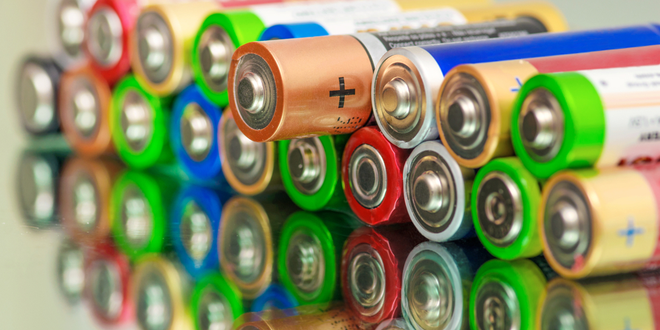The omnipresent dry-cell batteries commonly used for portable electrical devices make life so much easier. Developed way back in 1886 by the German scientist Carl Gassner, they use a paste electrolyte, with only enough moisture to allow current to flow. Unlike a wet cell, a dry cell can operate in any orientation without spilling, as it contains no free liquid, making it suitable for portable equipment.
Today, the two main types are the zinc-carbon cell, with a nominal voltage of 1.5 volts, the same as the alkaline cell (since both use the same zinc–manganese dioxide combination).
A standard dry-cell battery is made up of a zinc anode, usually in the form of a cylindrical pot, with a carbon cathode in the form of a central rod. The electrolyte is ammonium chloride in the form of a paste next to the zinc anode. The remaining space between the electrolyte and carbon cathode is taken up by a second paste consisting of ammonium chloride and manganese dioxide.
But these batteries will not produce renewable energy that is needed to restore and protect the environmental balance and replace coal, oil and other polluting energy sources. The Paris Agreement encourages switching to renewable energy sources, and indeed, green energy appears very attractive, with its promises of no pollution and no need to extract fossil fuels. The sun and the wind are there, and all we have to do is harness them to produce electricity. On the face of it, those same factors should also make green energy cheaper to produce.
But there is a substantial barrier to shifting our energy production to these sustainable sources, so much of the world hasn’t already shifted to renewable energy.
One of the challenges of switching energy production to sun and wind that they are not always shining at us or blowing. At times, energy production using these sources is effective, but at other times, production falls while consumption doesn’t. A power plant that supplies electricity only during the daylight hours can’t provide a population’s needs. Energy must be produced and stored, to be released when it is needed.
Thus, a solar power plant would need to charge big batteries during the day, to be used during the night. Batteries of such scale, however, are very expensive both in initial costs and in maintenance.
Such batteries are so expensive because of how they function. For commercial use, flow batteries – which are very different from dry batteries and lemon batteries (familiar from school experiments). In flow batteries, the two electrolytes (liquids with dissolved positively and negatively charged particles) are not static but pumped through the system. A selective membrane separating the two liquids prevents self-discharging. The interacting chemicals on two counter electrodes produce the electric current.
Unfortunately, the membrane is the most expensive element of the battery stack, accounting for up to 40% of the initial costs of the battery stack. In addition, the membrane requires maintenance and must be replaced continually due to wear. The electrolytes, in contrast, can last 20 years or more. Reducing the price of the membrane or else finding a way to eliminate it would provide a significant boost to the cost-effectivity of sustainable energy.
This is exactly what Technion master’s of science degree student Lihi Amit set out to achieve, under the supervision of Technion Faculty of Mechanical Engineering Prof. Matthew Suss from Grand Technion Energy Program and working together with Danny Naar, Dr. Robert Gloukhovski, in collaboration with Dr. Gerardo Jose la O’ from Primus Power Inc. Their recent article in ChemSusChem under the title “A Single‐Flow Battery with Multiphase Flow” was featured on the journal’s cover.
The researchers’ approach was to eliminate the membrane entirely. If the two electrolytes could flow together without intermixing, like the way oil and water can share a container without mixing and only interact with each other in a controlled manner to produce an electric current, the need for the membrane would be eliminated. The team built a flow battery using bromine and zinc – cheap and readily available materials – and used a non-propriety complexing agent. This agent trapped the bromine in bubble-like droplets, producing an oil-and-water effect and releasing only as much bromine as was necessary at any given moment for maintaining the electric current.
In effect, the expensive membrane of the battery was replaced with the cheap and fluid membrane of each individual droplet. The study proved the feasibility of this novel approach to flow batteries and characterized its performance – a necessary step on the way to commercial use. The team hope that in the future, cheap membrane-less flow batteries will permit the widespread use of sustainable but inconstant energy sources.
The shortcode is missing a valid Donation Form ID attribute.



